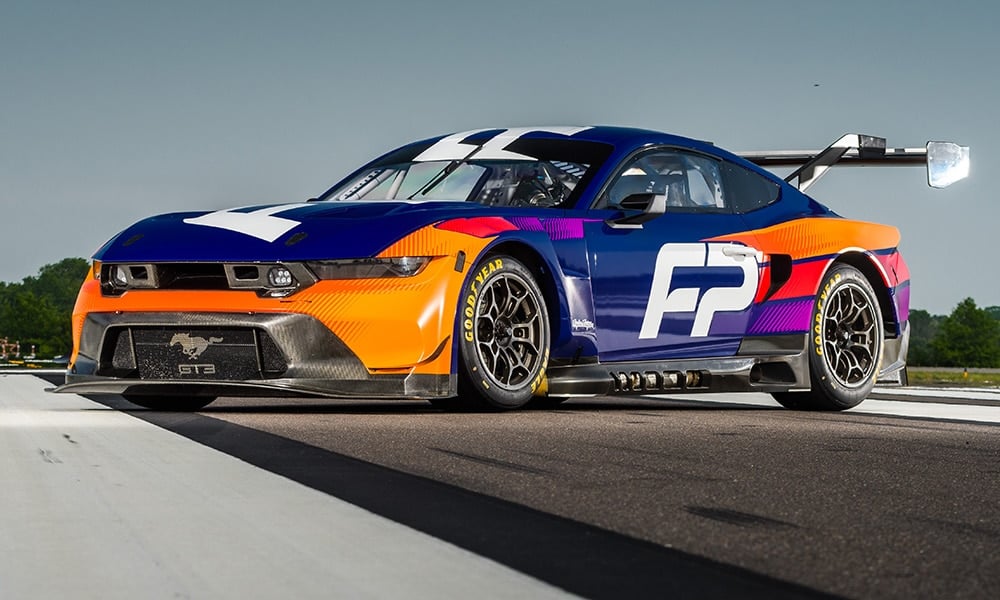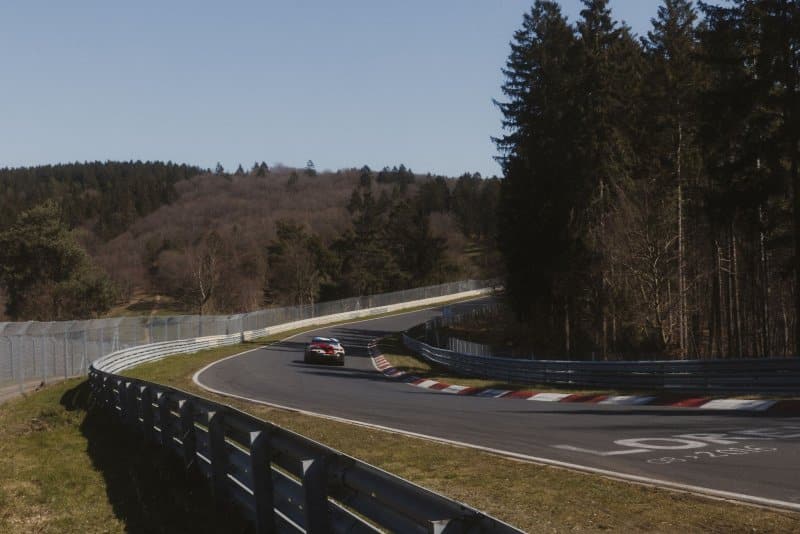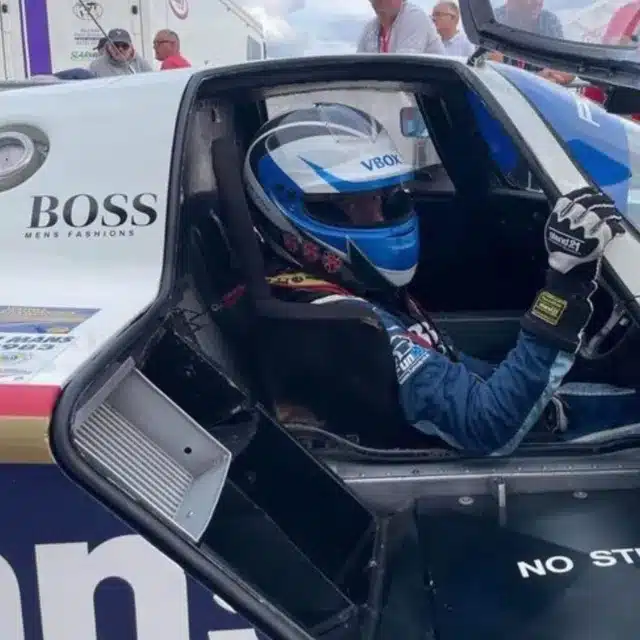How do you measure success on the track? That is one of the topics tackled in this week’s Racecraft & Race Cars Roundup.
In addition to success metrics, you will get details on physical conditioning for race drivers, data analysis, the lure of lapping the Nürburgring and more.
All this in this week’s edition of the Racecraft & Race Cars Roundup on Motorsport Prospects. News that racers can use.
Racecraft Tips & Techniques
On-Track

This is a great video from sim racer turned real racer Suellio Almeida as he brings you inside the car while racing in an endurance event at Daytona.
How do you measure success? That is what Ross Bentley of Speed Secrets discusses in his latest newsletter where he tackles the issue of success metrics. “I’d like to challenge the way you currently measure success. Yes, the way you’re doing that now may be perfectly fine, and it may work well for you. But perhaps another way of looking at success may bring even more enjoyment to you. That can’t be a bad thing!“
Dion von Moltke of Blayze explains how a race car driver’s hand position can prevent a crash and why you need to stop shuffling your hands while racing. “Amateur racing drivers often ask, “It’s so much easier to just shuffle my hands on the steering wheel, does 9 and 3 o’clock ALL the time actually matter?” At Blayze, we found that over 40% of road racing drivers shuffle (also called hand over hand steering) their hands while turning the steering wheel. In other forms of motorsport like Autocross, that number is most likely much higher as some racing schools do teach student drivers a variation on the shuffle steering method.”
Don’t forget that Motorsport Prospects readers get a special discount on Blayze services using this code.
On Episode 47 of the Your Data Driven podcast, Julian Thomas discusses racing, resilience and the VBOX story. “Julian Thomas joins Samir Abid in this intriguing podcast episode to explore the world of motorsport data and analytics. The founder of Race Logic and VBox, Julian Thomas shares his unique motorsports journey, the value of mastering the basics, and how you can practise these in your everyday driving. This episode is brimming with Julian’s insightful lessons. So as ever. Grab a pen. Grab a coffee. Sit back and enjoy what Julian has to say.”
Autosport explains how British GT is holding drivers to account for misdemeanors. “There’s no denying that it’s noticeable how more stringent the officials have been with driving standards this year and, while it could be debated just how strict these penalties should be – given none of the incidents have been deliberate – one thing that cannot be tolerated is abuse of any kind, even among the drivers themselves.”
Off-Track

Inside Indiana Business of Health Reporter Kylie Veleta has details on the high-tech tools drivers are using to stay in shape as she features renowned motorsport fitness gym Pitfit Training in the video above. Did you know that drumming and driving a race car have similarities in reaction time and muscle memory?

Sam Cooper at Planet F1 gets an eye-opening experience into the insane fitness levels of F1 drivers. “From extreme heat to high levels of concentration and of course the G-force which brings us back to that notable physical feature – the neck. Drivers will regularly face up to 6G going through a corner and it is easy to forget that this figure means their own bodies suddenly feel six times heavier.”

Simon Hayes is featured on the latest On the Kerbs podcast as he discusses performance coaching, dispelling myths, classic F1 with Senna and more. You can watch the episode above. “Joining me On the Kerbs this week is Human Performance Consultant Simon Hayes. We caught up a little while back to chat about how he first got into the world of motorsport, what the process is like for him and a driver when they decide to work together, how the industry has evolved over the years, who he’s worked with across the motorsport world and much more! It’s an insightful conversation about an area of motorsport that doesn’t get talked about often enough so I hope you enjoy our conversation.”
Race Car & Series Developments

Ford Performance launched its Mustang GT3 program formally at the Le Mans 24 Hours earlier this month, amid a peppering of reveals and announcements from teams, manufacturers and governing bodies ahead of the centenary event. “Signing Proton, Porsche’s largest GTE customer, puts Ford in a position in which it can afford to feel reasonably comfortable about gaining a pair of slots on the grid. This was a calculated move, not a last-minute decision ahead of Le Mans week. DSC understands that this deal came together a long time ago and was successfully kept under wraps in the build-up to the public announcement.”
The Middle East will remain on the Asian Le Mans Series calendar for the foreseeable future despite a return to southeast Asia according to ACO President Pierre Fillon, who has targeted the return of Asian teams for the 2023-2024 season and beyond.
The Chinese Formula 4 championship is planning to switch from its first-generation Mygale car to the manufacturer’s second-generation chassis next year, and to introduce hybrid components. “MiTime Sports said their Mygales will be fitted with a 48-volt mild-hybrid system and also a Kinetic Energy Recovery System. KERS was introduced in Formula 1 in 2009 and involves recovering energy from braking that is usually lost as heat by ‘translating’ it into electrical energy and then storing it for later use.”
The FIA has confirmed a Formula Regional Gen2 chassis for 2025 and has extended the life for the next F2 car. “For regulatory stability and cost-saving reasons, the lifecycle of the next generation of chassis will be increased from three to six years, so that for FIA F2 the new chassis spec will be operational from 2024 to 2029, and in F3 from 2025 to 2030. The duration of the associated chassis single supply will be aligned with these lifecycles. The homologation and technical regulations for the second-generation FRegional cars include “a prescribed design for key aerodynamic components to ensure the correct performance level and to achieve the close-following benefits learned from Formula 1” with an aerodynamic design concept from the FIA serving as a “baseline for manufacturers to help to reduce development costs”, an updated survival cell, new crash test requirements and “limitations of planks and brake discs”.
A new Arrive and Drive series has been created utilizing generation 1 Ligier F4 cars. The Formula Super GP will launch later this year with a Winter Tour beginning in December with plans to continue throughout 2024 to bring new people into open-wheel racing. For more information on the Formula GP Series, please visit www.FASuperGP.com or contact via email to Jonathan Lewis at formulasupergp@gmail.com.
Track Days

Road & Track looks at the lure of lapping the Nurburgring. The first few laps are a shock. Everything feels too frantic for comfort, and the lap time refuses to come. I’m not just a second or two off. Think tens of seconds. The Döttinger Höhe provides a brief moment to regroup. I radio the team to give fuel readings and tire pressure. Now, take a deep breath and remember that just a few miles per hour more at a few crucial corner apexes can exponentially increase speed on the long uphill sections that follow. Instinctively, I tighten the belts over my shoulders again and mutter, “Fucking get on with it.”


